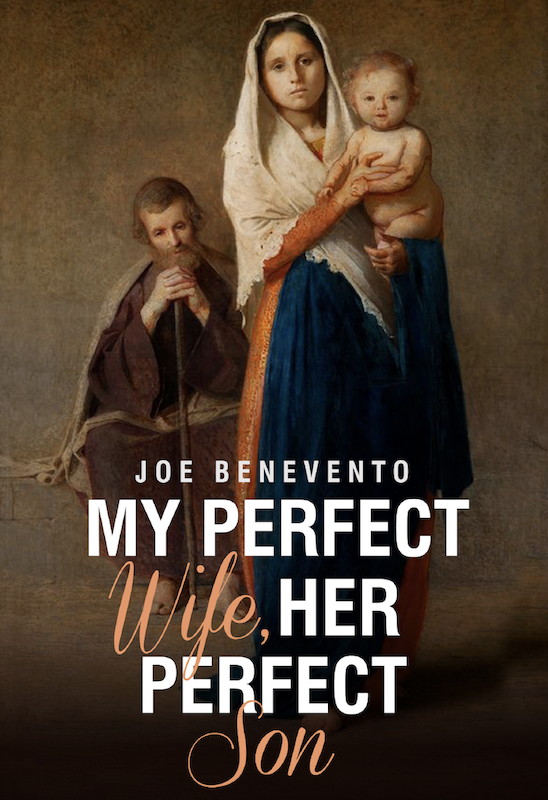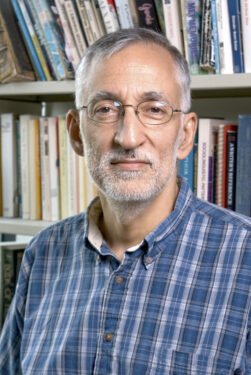
Editor’s note: This article first appeared in the March 25 edition of The Tablet. Since then, author Joe Benevento donated 100% of all royalties for the novel in perpetuity to Catholic Charities of Central and Northern Missouri. He also partnered with CCCNM to create Advent reflections that tie into the novel. The reflections and accompanying podcast are available at cccnmo.diojeffcity.org/news-events/.
RICHMOND HILL — Joseph, a craftsman in Nazareth, thought he knew the right thing to do — quietly divorce his pregnant betrothed, Mary — but “an angel of the Lord” appeared to him in a dream, telling him to reverse course.
“When Joseph awoke, he did as the angel of the Lord had commanded him and took his wife into his home. He had no relations with her until she bore a son, and he named him Jesus.” — Matthew 1:24-25.
Here is St. Joseph, a man of action, obedient to the plans of God, and an example for all. That says a lot but not much else — Joseph never is quoted in Scripture.
Author Joe Benevento, a Queens native, believes there is much more to learn from St. Joseph, which he conveys in his new novel, “My Perfect Wife, Her Perfect Son,” which arrived in March.
Benevento, now a retired English professor in Kirksville, Missouri, gives voice to Joseph — the skilled but simple woodworker who earns many titles, like “Protector of the Redeemer” and “Patron of the Universal Church.”
“It’s obviously all speculative,” Benevento said of his new book. “There’s nothing much in the Bible about Joseph. He was from the House of David, a craftsman, and a righteous man. That’s all. He never says a word.
“This idea that St. Joseph was a real person — not just somebody we’re making up — would make a good story.”
But consider, Benevento said, that a “real person” desires physical intimacy with a spouse. Still, the Catholic faith teaches Mary was a virgin before, during, and after the birth of Jesus. How did Joseph deal with that? Was it easy, like flipping a switch? Benevento doesn’t think so.
“And one dream from an angel, and he’s good to go,” he said. “But it had to be way harder for him than just that. He’s a real person. I thought, ‘I’m gonna let the guy talk.’ ”
In recalling Jesus’ birth, Joseph tells the reader, “When I held him and gently swayed him in my arms, he soon stopped crying and looked up to me as if he knew me. I looked for some sign that this child was the actual son of the Most High, but I saw instead a newborn infant, seemingly as helpless as any human infant, and so one who would need me to love and protect him for years to come.
“And the pride I felt, just in holding him in my arms and settling him away from his cries, made me know I would do anything to make him safe and secure.”
From Queens to Nazareth
Benevento is from a large Italian American family in the Richmond Hill neighborhood of Queens. The family faithfully attended St. Teresa of Avila Parish in South Ozone Park. The future English professor at Truman State University in Kirksville received his elementary education at the parish’s Catholic school.
His youth during the 1960s and 1970s inspired his works in poetry and fiction. But his new book forced him to reach way back in time.
“My initial idea was to maybe write a book about Christ’s years that nobody knows about,” he said. “We have that incident when he was 12 in the temple. The next we hear from him is just before he starts his ministry.”
One night, Benevento said, he was lying in bed and had the realization that there’s never been a book in which St. Joseph tells his side of the story. He immediately began jotting notes about what that would be like.
No ‘Thees’ or ‘Thous’
Benevento wrote a first-person narrative in a contemporary but plain vernacular to make Joseph and the other characters relatable to present-day readers.

“I realized I couldn’t pull off trying to try to make them sound biblical,” Benevento said. “I just didn’t have that kind of skill. I thought it’s easiest for the contemporary reader to see them as real people if they talk like them.”
But while the characters’ dialogues are free of “thees” and “thous,” Benevento steers away from modern expressions. Nobody is referred to as “dude,” for example.
“They just talk,” he explained. “You could think this is a contemporary translation of when they were speaking in Aramaic.”
Scripture tells how the radiant archangel Gabriel visited Mary in the Annunciation, celebrated each year with a feast on March 25. But there is no such detail regarding the angel who visits Joseph in his dreams. Benevento exercised literary license in describing the characters.
Enter Joseph’s angel, Shlomo — a messy being who is anything but handsome. Benevento said this character is more like the simple-minded angel Clarence in the classic holiday movie, “It’s a Wonderful Life.”
Shlomo, however, has an edge.
“I’m no cherubim,” he tells Joseph, who notices this angel is wingless. “I get around fine without wings, I can tell you.”
Benevento noted that Scripture holds many depictions of angels who appear as regular humans — a Godly challenge for people to have faith, despite what they see.
“Shlomo keeps telling him, ‘Hey, God knows what he’s doing. And you need to understand that God knows what he’s doing better than you,’ ” Benevento said.
Real People, Real Issues
Benevento researched daily life when Jesus walked the Holy Land to set the scenes, including food, geography, and architecture.
Benevento asked a former student, author Kate Kort, to critique an early draft. Kort, who is Jewish, pointed out particulars of that faith’s customs that still exist.
“People who are observant Jews can hardly do anything on the Sabbath,” Benevento said. “But one of the few things they’re allowed to do is have conjugal relations.”
In the book, Joseph becomes caught up in his work and fails to observe the Sabbath. Mary is displeased, and Joseph bristles, noting that one thing allowed on the Sabbath is sexual intimacy, which they don’t have.
“So,” Benevento said, “she tells him, ‘Oh, you want just to keep that, but not the other rules?’ And so, they have a little argument about that. But I would never have been able to get it right if Kate hadn’t told me about that.”
Spoiler Alert
Anyone who knows Scripture already has a heads-up on its conclusion, but Benevento gives insight into how Joseph and Mary lovingly find peace in their marriage.
And although Joseph doesn’t yet have all the answers, he reaches the end of his life knowing Mary and Jesus will fulfill their destinies. With Shlomo’s parting message, he edges closer to his “happy death” — one of his many patronages.
“I’m not trying to claim that this is what things were like — it’s fiction,” Benevento said. “It’s a fun, but also, I hope, inspiring version of seeing Joseph as a real person and seeing the dynamic relationship between Joseph and Mary.”
